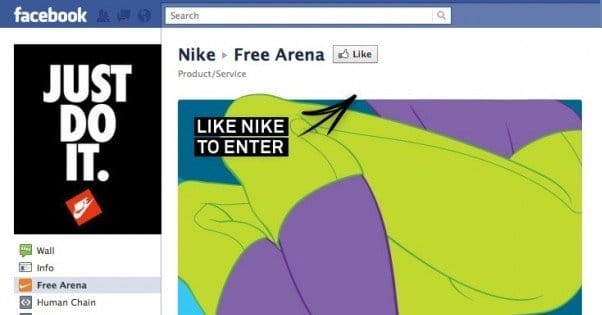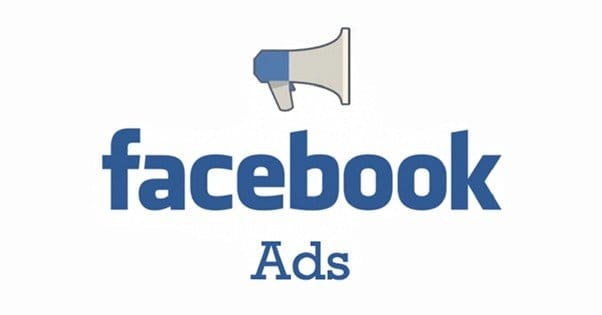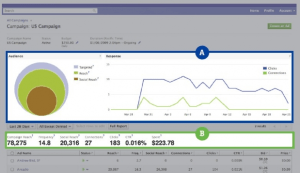 Written by ContentPowered.com
Written by ContentPowered.com
Not all that long ago, Facebook was a haven for marketers who wanted to force people to like their page in some way or another. Back when you could set a landing page app, it was possible to hide all the content on your page behind a like; you couldn’t see a single post until you liked the page. Facebook removed that function, and rightly so; if I can’t see your page content, why am I going to like you? Make me want to like you.
The most recent change is the removal of like gates. A like gate was the ability to hide your content – an app, a blog post, a contest – behind engagement. If the user wanted to use your app or enter your contest, they would need to like your page. Never mind that this tended to lead to a lot of low-quality followers and a lower reach due to a diluted message; look at that follower count go up!
Since the removal of like gate functionality, marketers have scrambled for alternatives they can use to grow their pages.
I’ve gone out and compiled some of the best ideas they’ve had!
1. Use an App Email Form Gate
This is a pretty simple idea. If Facebook won’t let you like gate your content, you can at least gate it behind some other kind of engagement and promote that gate on Facebook.
The first thing you need to do to utilize this is create content worth seeing. I’m not going to click your app, let alone opt in to your mailing list, if you don’t have something I really want to see. I don’t care what it is; a premium class, a free audit, an ebook, whatever. Just make it good.
The second thing you need to do is make a landing page that solicits email addresses in exchange for that valuable piece of content. You can read all about doing that with articles all over the web.
The third thing to do is turn that page into a Facebook app. That’s easy enough to do; most Facebook apps are basically just iframes to a different webpage. All you need to do is make the app framework – or get it from somewhere, they’re not hard to find – and direct it at your opt-in.
Once you have that established, you effectively have a Facebook app that gates content. The only difference is, you’re gating the content behind an email signup rather than a page like.
2. Run an Engagement-Gated Contest Post
One of the other changes Facebook made relatively recently was removing the mandate that all contests be run through an app. This allows you to, for example, create an image with the entry requirements for the contest and share it on your page. You say, perhaps, that “anyone who shares this image is entered into a contest to win X!”
This is, surprisingly enough, legal now according to the Facebook terms of service. It may not be the most effective way of reaching people, but it can get your content in front of more people than it normally would, because you’re requiring a share for an entry. Users aren’t gated from seeing the contest, and they’re not really gated from entering it in any way, they just have to share an image. It’s a good way to get a lot of shares in a hurry.
3. Run a WooBox Contest
WooBox is a prominent service that does a lot of different things for social media. They have quiz apps, photo contest apps, “pin to win” apps, custom Facebook tabs for other social media sites like Pinterest and YouTube, prize claim apps, and a whole lot more.
The most frequent use of WooBox that I’ve seen around is the generalized social media and engagement contest. Essentially, you run a contest with a prize, and every user gets the opportunity to enter the contest in a variety of means. Different entry methods are worth different numbers of entries, depending on how you want to value each. You might ask for a Facebook post share, a retweet, a Twitter follow, an email signup, or another form of engagement.
The most interesting thing I think about WooBox is the unconventional entry methods. I’ve seen a number of giveaways, mostly for video games or Steam gift cards, that have entry methods such as joining a Steam group. That’s not an entry method many marketers think of, but for certain niches it can be very useful.
4. Run Regular Promoted Posts
Unfortunately, like gates were one of the last free ways you could use to really boost your follower count. Fortunately, moving away from them is a good thing. If you have a little money to spend, you can promote posts to be more visible to certain types of users.
Jon Loomer recommends that you only target your existing fans when you promote posts, and he does have a point. If you’re looking to get people to click on your links, go to your site, and convert, you’re going to want to target the people who are most interested in your brand already. These will, of course, be the people who are already following you.
I feel as though there’s a good time to promote posts that aren’t directed at your audience, though. You can create a specific lookalike audience, so the targeting you use is reaching people who look a lot like the people who follow you, but who don’t already follow you. Using this audience, you can promote posts meant to engage those users and get them to experience your content.
You can do this with organic posts, with outgoing links, or – and this is the most useful – with contest posts. Running a contest through a post gives you the ability to promote that post, and you can specifically run a contest meant to encourage people to like your page. It can’t be gated, per se, but it can encourage that action nonetheless. You might even just say that winners who are followers get a bonus prize.
5. Run Traditional Facebook Ads
Even though like gates are gone, Facebook is still a great platform for advertising. Facebook’s PPC is very robust, perhaps the most robust ads system in the world, simply due to all of the information you get from the people using the site.
There isn’t room in this article to tell you everything you need to know about Facebook ads. Heck, I could spend the rest of it just linking you to excellent guides. Instead, I’ll just try to convince you why they’re so valuable.
The primary reason is simply the high reach for the low cost. You can reach a lot of people for $100, though the number goes down the more you refine your targeting. Ideally, though, you’ll have very refined targeting and a low cost as well.
Targeting is really the key to successful PPC advertising. Poor targeting wastes money, while good targeting pulls in an incredible number of interested leads. From there, it’s all about your sales funnel and how well you can convert those leads.
6. Spend More Time on Excellent Content
One of the best ways to attract followers on Facebook is to post enough awesome content that those people decide they want to follow you just to see more of it. You don’t even need to actively solicit those follows; they’ll come on their own.
I recommend trying to become an industry authority, rather than just an authority business. What this means is, rather than sharing your own content exclusively, you share content from other industry sources from around the web.
I would typically recommend something like a 2:1 ratio of curated content to your own content, though this ratio will vary heavily depending on how frequently you want to post, how timely the content is, and how much content you produce. If you want to be a more news-focused site, you’ll want to post more often. If you’re more of an evergreen curator, you can post less often.
The key to successful curation here is to draw from multiple sources. If most of your posts all come from one account which is itself doing the curation, your users will notice and decide they might as well just follow that account instead. You need to do something and draw from somewhere no one else is.
7. Create Videos that Solicit Likes
Video content is swiftly growing on Facebook, so much so that some claim it has surpassed YouTube as the top dog video host online today. I don’t believe that’s true – there are issues with view counting and different metrics – but it’s undeniable that Facebook is at least very potent.
Have you ever watched a video on YouTube and seen a 10-30 second section at the end where the creator of the video addresses the audience? Typically this is accompanied by a couple of inset video previews to encourage more viewing, but it also often has a link to where you can follow that creator’s social accounts.
Facebook doesn’t have YouTube-style annotations, so you can’t make a clickable link on the video screen itself. You can, however, include a link to your page in your video description and use your endcap to encourage users to follow you. If your video content is sufficiently compelling, this will draw in a good number of users.
8. Focus on Mobile
An increasing number of users are using Facebook exclusively or almost entirely on their phones. Mobile devices, including both phones and tablets – anything running on a mobile OS, really – are ever more widespread with each passing month. Over half of all Facebook users do at least some of their browsing via mobile, and over 30% use mobile exclusively.
You can do a lot to attract new users just by promoting mobile content. You can do this in a few ways, but the most obvious is just to make sure your website is mobile-friendly. By now, I hope it is, because Google is using mobile-friendliness as a ranking factor.
You can also cater to mobile users by running mobile-specific advertisements. Mobile ads are more effective than desktop ads just for one reason; using an adblocker on a mobile device is a much more difficult process than using one on a desktop PC.
Another way to cater to mobile is to create a mobile app and encourage users to use it. This is most effective if a lot of users go to your site for one specific reason; you can create a task-oriented app to perform that task, which eliminates the need for those users to visit your site.
9. Focus on Something Other than Likes
Focusing too much on likes is what gets a lot of businesses into trouble. They do everything in their power to get more and more followers, but then what? What do they do with them?
That’s what you should really begin to focus on; what you do with the followers you have. Focus on creating a high quality user experience for the people who follow you. Make sure there’s always something for them to do, always some value to be had, and word will spread. When you give users value, users come to get that value. Your past usage of like gates has given you a good amount of users as a seed audience, which you can leverage to spread your reputation.
10. Abandon Facebook Entirely
This is an extreme measure that some marketers legitimately have done. If you talk to them, everything is always doom and gloom. Facebook is dying, they say, and they cite the study from a couple years ago that claimed Facebook was on the verge of a mass exodus. They point to the declining reach, both of organic and paid forms, as a sign that it’s better to just not even try. They point to their audiences – in the thousand or tens of thousands – and how their posts have no comments, no likes, no shares. They point to Facebook ads, and their terrible track records, how they lose money every time they try to use them.
There are a whole bunch of reasons why this is the case. Their audience may be large, but what percentage of those users are real? How many of them followed their page because they were running a contest to give away a Galaxy phone, and for no other reason? How many of them are bots? Study up a little on EdgeRank and you’ll see how the quality of a user is really more important than the quantity.
That said, you could even abandon Facebook, if you had a viable alternative. There are plenty of businesses that thrive on nothing more than their websites and a couple of Twitter feeds. Some of them don’t even really have an online presence at all, letting their physical storefronts do the talking. If you’re in a position where you can get that to work, well, more power to you. As much as we marketers always say that Facebook is excellent, some people just don’t have the business, the audience, or the budget to make it work for them.
That said, I always believe there’s something you can do, even if what you have to do is go through your followers in as much detail as possible and remove the worst of them. A follower audit is difficult with the lack of tools Facebook makes available. It’s possible, though, and if you were hit by a clickfarm or just bought a bunch of low quality likes, it might be something you need to do.
The analogy I like to draw is with a Windows computer. For some people, when their computer starts to slow down, they have a virus, or something breaks, they reformat and reinstall. Others have the knowledge, the patience, and the tools to fix the problems rather than wipe it all and restart. The best part is, none of that knowledge, none of those tools, are exclusive to the technology world. Anyone can learn them, given the time and resources.
The same goes for Facebook. You can make it work for you, pretty much no matter what business you have. It might take a while, or it might require a lot of hard work, but it can be done.







